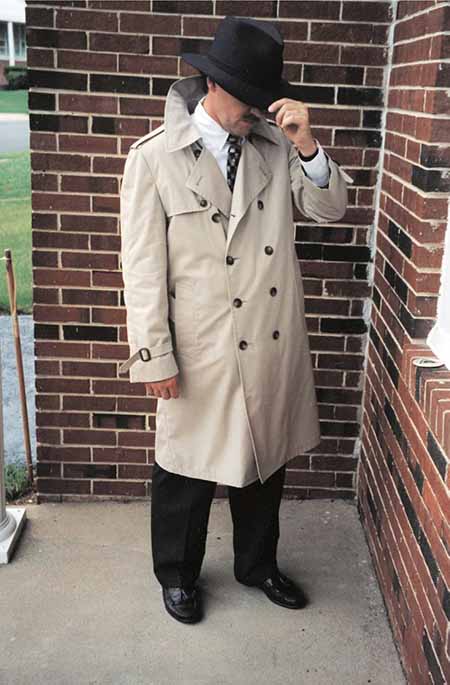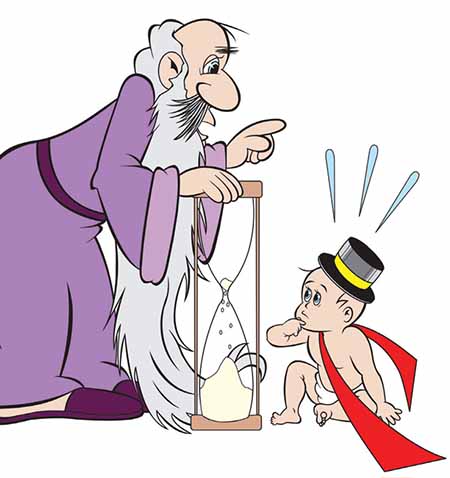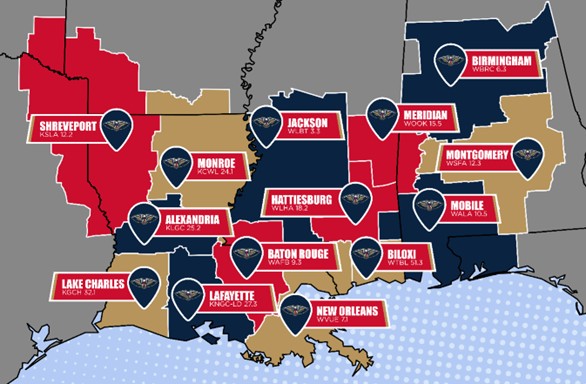2014: A Year Not Unlike Others
You might not have noticed, but… you might be tracking the wrong trends.

Every time I see that baby with the top hat standing alongside the old dude with the hourglass, I cringe. Their iconic presence means we’re gonna insert a hard stop in the smooth continuum of time, and try to carve out a single, 12-month portion, like slicing a small square of lasagna outta the center of the pan. And we’re gonna study and analyze that little portion like it’s not part of something bigger. It’s not natural, but we do it anyway.
Want the skinny on 2014? Try this: “It’s not like it used to be.” Time was, a year-end compendium in this fine publication would deal exclusively with engineering topics… recently revised federal standards for carrier deviation, or the year’s newest low-noise processing circuits.
No more. Today, you need to know more about bureaucracy than about bandwidth; more about trends than transistors. Because that’s where the real communications revolutions begin—not on workbenches splashed with solder, but in the backrooms where regulatory deals are made, and in the back pockets of gadget-toting hipsters.
Our livelihoods, in support of the technologies of mass communication, are determined at opposite poles—by the seemingly powerful at the top who make policy by making deals, and by the unempowered masses at the bottom who exercise a more genuine power by choosing what they watch, when they watch it and the devices and distribution channels they use to access it. And we serve both of those groups.
ANALYZE THIS
So… what happened this year? Nothing, and everything.
Yes, technology marched forward, as it always seems to, but that’s not news. And charting that progress is a little like tracing the slime trail of a garden slug.
The real news is in the megatrends, not the microchips. 4K TV… isn’t that advancing technology? If UHDTV is news, it’s not because bright folks created killer technology, though; it’s because consumers wanted to spend more to see it. (Which they haven’t, yet.) Or because regulators and corporate moguls have found ways to create the fatter channels needed to push those extra pixels. (Which they haven’t, either.)
Maybe next year for that one.

Looking for news you can use? Turn to my beloved nemesis, a.k.a. “The Commish,” for clues about your long-term career prospects.
Channel repacking and spectrum auctions… I know you’ve heard about those. I keep readin’ how they threaten our way of life, our very existence! Nonsense, says me. Those are trivial concerns, logistical exercises about channelization and bandwidth and whatnot.
Look at the watershed moments that created the FCC to control radio frequency allocation, and the dickering that gave us the mess we called NTSC. Our predecessors lived through it, kept their jobs, and kept delivering ever-changing modes of mass communications to the biggest audiences in the world. Granted, more has changed in the last seven years than in the first 70 of the FCC’s existence; but if we stop sweatin’ the details, and start thinkin’ big, we’ll keep doin’ what we do.
THE REAL HOT NEWS
Wanna talk about an FCC issue, ripped from the headlines, that you oughtta track? Try net neutrality—that’s a bit of rulemaking that has more potential impact than any tech-spec regulation they can promulgate.
Content delivery via RF, which has always been a huge focus for us TV and radio guys, isn’t the big deal it once was, and I think you know that. Admit it. You’re pushin’ content out 10 different ways, almost all of them involve bits, and only a few involve fillin’ the ether with RF.
Remembering that those two top-and-bottom megaforces, dealmakers and content consumers are really drivin’ the bus… who cares how it’s delivered? You’re still producing and delivering content… the distribution channels, quite frankly, are none of your business, and anyways, nobody asked you.
We’ve always had level-playing-field channels of distribution, monitored and regulated by The Commish in imperfect ways, but resistant to monopolization by special interests. That’s what net neutrality seems to be about—keeping common-carrier distribution impartial—and that guarantees our future better than the alternatives.
BE NOT INFLAMED
One final trend note: Netflix CEO Reed Hastings drew 2014 headlines with this wonderfully inflammatory quote: “The age of broadcast TV will probably last until 2030.” Great line… wish I’d said it. Is he wrong? Who knows. Wires gave way to RF; now giving way to wires again; but they still want RF delivery, even if it’s on different channels and devices. Bad news for us? I don’t think so. Once again, our fate is in the hands of those at the top and those at the bottom; but, hey… they both need us to make it all work.
And that’s a trend I’m willin’ to buy into any day.
Mario Orazio is the pseudonym of a well-known television engineer who wishes to remain anonymous. E-mail him atmorazio@nbmedia.com.
